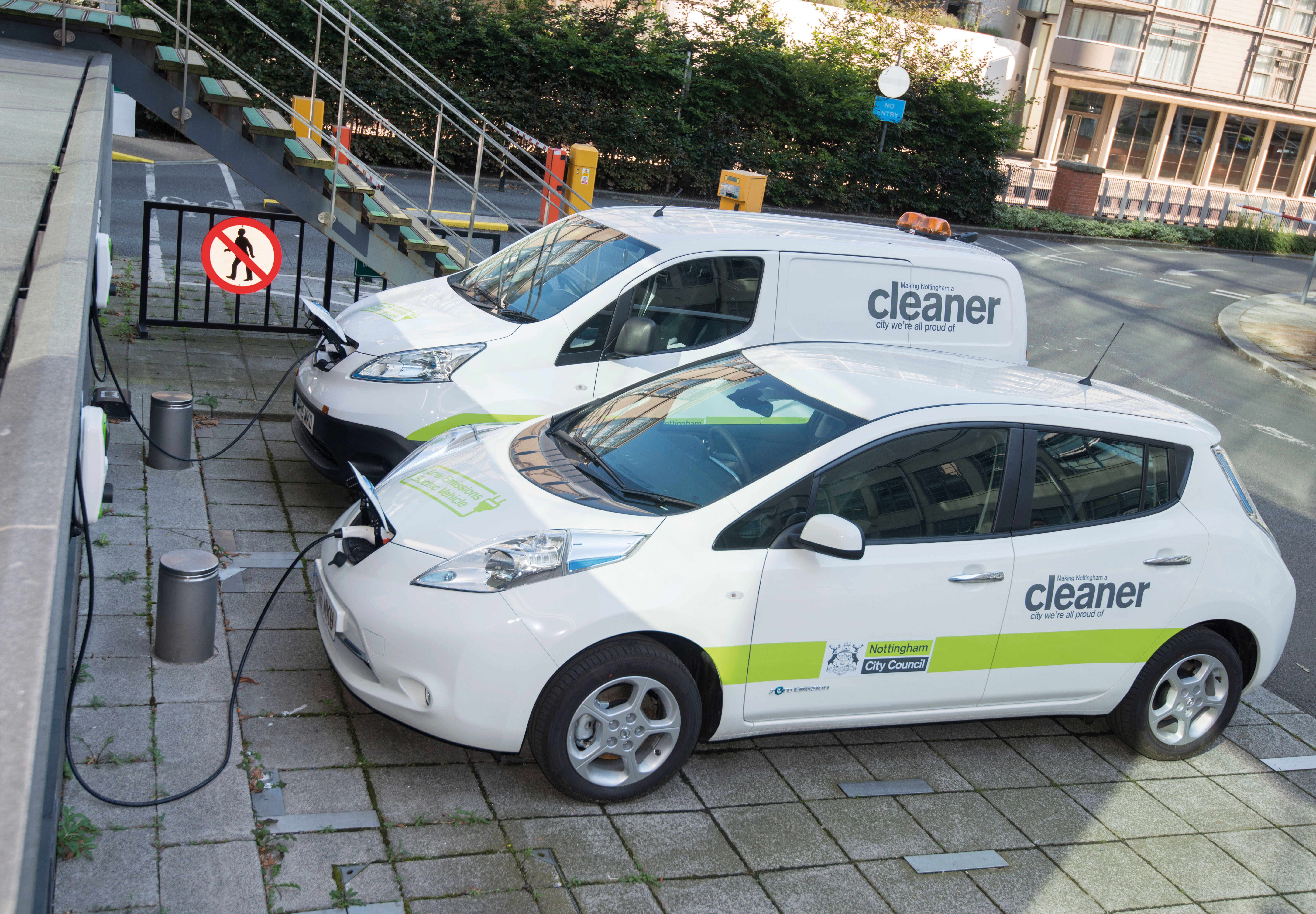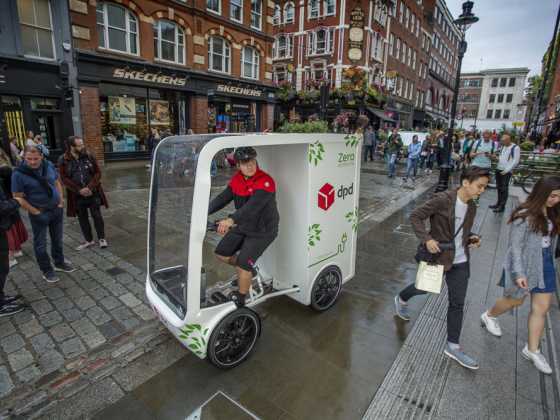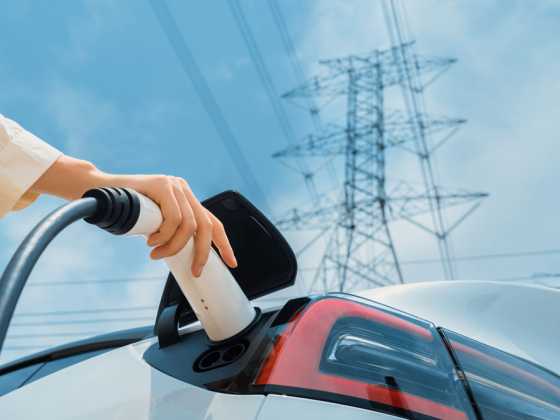Delving deeper into a fleet’s real-world performance

Cenex’s project manager Luke Redfern outlines how fleet operators can measure their own driver behaviour, route choice, traffic patterns and vehicle performance to compare against industry standards, and ultimately produce more accurate total cost of ownership and emissions modelling
Over the last decade, the diesel engine has been the logical choice for fleets for economic and carbon-reduction reasons.
Fleet owners and operators have refined their decision-making based on the ability to apply diesels across the full range of fleet operations. Despite the inherent efficiency of diesels, published data on fuel consumption has always been treated with a level of scepticism, and the majority of fleets have monitoring systems to record real-world fuel economy and carbon emissions for high-mileage vehicles.
The cost-benefit ratio of deploying on‑vehicle telemetry means low-mileage and grey fleet vehicles typically go unmonitored. However, data can carry over to these vehicles for reasonable assessments to be made.
Now the logic of diesel-only fleet operations is under challenge as the motor industry has switched its investment to electrified powertrains. Its product ranges have an increasing number of battery-electric and plug-in hybrid vehicle options, and today’s fleet replacement investment decisions need to compare these available options with diesel.
CLEAR CAPTURE
The Cenex fleet team has developed a new vehicle-monitoring approach called CLEAR Capture, which, with support from emissions analytics, offers a low-cost means by which fleet managers can gain valuable insight into real-world pollutants and carbon emissions. This can help inform replacement decisions for key segments of their fleets.
For air-quality management purposes, the end goal will always be for battery-electric vehicles to deliver zero tailpipe emissions. However, as electric vehicles are very new to the market, Euro standards provide the proxy measure for reductions in pollutant emissions from diesels, with a downward trend expected with each older vehicle being replaced.
That latter assumption has now been strongly challenged, as data has demonstrated that laboratory compliance required for Euro standards doesn’t carry over into the real world. Furthermore, variability between different cars and vans can be marked. This adds a level of complexity to decision‑making for fleet renewal at a time when clean-air zones are being proposed for a number of the UK’s main cities.
As with London’s Low Emission Zone, the introduction of other clean-air zones means fleet managers with operations in those cities need to consider the real-world operations for all fleet vehicles, not just those that currently have telemetry fitted. This is where low-cost data collection and emissions estimation solutions become a business priority.
By applying CLEAR Capture, fleet operators and local authorities can measure driver behaviour, route choices, local traffic patterns, and performance for categories of vehicles that don’t have telemetry already fitted, and compare it against industry standards. This will ultimately produce more accurate total cost of ownership and emissions modelling.
USING THE SYSTEM
Firstly, as a simple and unobtrusive method to track current vehicle fleets, the CLEAR Capture system can be installed in either the cigarette lighter or the OBD port, both of which are easy to access. The fleet doesn’t need external technology support to install the no-hassle, plug-and-go tracker, which is mailed to the operator and installed by the user.
Secondly, the type of data being collected should be reconsidered. Typically, organisations don’t collect journey-specific data, instead focusing on annual or quarterly reporting, which means vehicles are not segmented appropriately. If the vehicle fleet is first divided into specific classifications based on journey type and driving style, the data will become more actionable and provide insight to make better purchasing decisions that meet the company’s unique operational needs.
Segmenting vehicles by those that make regular stops, urban delivery versus long-haul, and load type will allow fleet managers to analyse the full range of their procurement needs rather than a general overview of the fleet.
Understanding the fleet on a vehicle‑by‑vehicle basis and using representative vehicles for groups with similar driver cycles and journey distance will produce a much more nuanced picture of the vehicle specifications the procurement exercise must meet. For instance, if only one-quarter of the vehicles experience frequent idling, there is no need to invest in energy‑recovering systems for the entire fleet.
Thirdly, fleet managers should identify reasonable ranges of comparable low carbon or low emissions vehicles upon which they can benchmark their fleets’ performance.
In the CLEAR Capture model, car fleets are compared against an electric vehicle (EV), plug-in hybrid electric vehicle (PHEV) and range-extended electric vehicle (REEV). Vans are only compared against an electric model due to technology maturity and market availability, but extra analysis of gas and biofuels can be added. Heavy-goods vehicle (HGV) fleets are more complex, but Cenex is working to develop a version of the CLEAR Capture analysis for vehicles above 2.2 tonnes.
REAL WORLD DATA MARKET
Next, the benchmarks need to be based on other real-world market data. Using aggregated data on duty cycles allows the energy consumption (and range) of an electric vehicle to be more accurately forecast. Relying on manufacturers’ data can produce wildly optimistic estimates of total cost of ownership (TCO), because they tend to significantly underestimate energy consumption compared to real-world driving patterns.
Finally, the reporting structure needs to be simplified. Too often we see driver behaviour and vehicle usage reports that are full of good information, but so complicated that they become too arduous to digest. Overly complex metrics and measures ensure a report is put on a shelf and never looked at again.
The Cenex team will provide fleet owners with tailored walk-throughs of their reports, offering the service and technical knowledge to support implementation. A clear, action‑oriented report should start with the procurement objectives (investment in low carbon vehicle technology to comply with UK air-quality zones) and end with a road‑mapping exercise that identifies the vehicles and technologies that work for the fleet. This will give fleet managers an unbiased look at the best low emissions technology to meet their fleets’ specific needs.
FLEET PRESSURES
An accurate understanding of the daily pressures placed on the fleet is critical to making smart decisions when it comes to replacing and upgrading vehicles.
The greater the variety of vehicles in the fleet, the more complex it becomes to understand the overall needs of a mixed-vehicle fleet and make the appropriate investments.
Accurate tracking systems such as CLEAR Capture are ideal for inner-city fleets affected by clean-air zones, such as logistics companies, courier services, private-hire taxi vehicles, postal services, public sector authorities and emergency services, and car-sharing schemes.
With services that analyse a fleet’s petrol and diesel cars and vans (up to 2.2 tonnes GVW) and compare the TCO with similar EV and hydrogen engine models, CLEAR Capture is a way for small and medium-sized fleet owners to dip their toes into the low carbon vehicle market with minimal risk.
For larger fleets, the transition to more efficient, lower-emission vehicle fleets has become business critical.
Whether operators are considering the business’s sustainability, compliance, or brand reputation, the opportunity to invest in green fleet technology is here.
Armed with the data that shows how a fleet operates today, fleet owners will be able to confidently invest in the technologies of tomorrow that will deliver cost efficiency and emissions reduction without the burden of trial and error.






